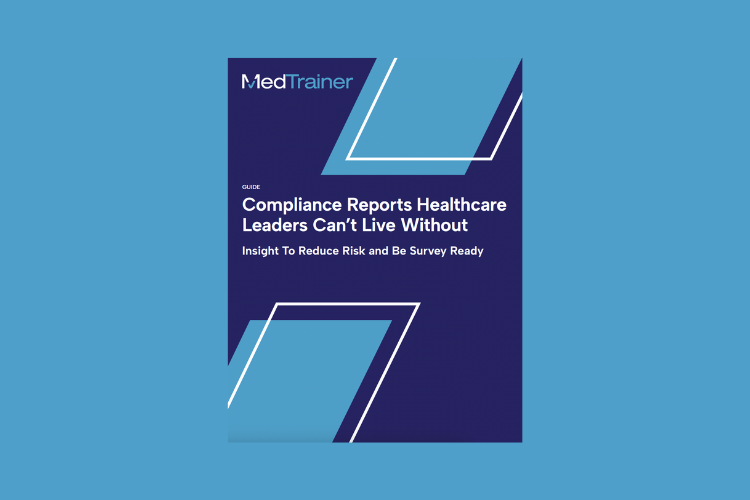Earlier this year, an in-depth OIG investigation resulted in a six-day trial of a former Louisiana health clinic CEO, who was ultimately convicted of Medicaid fraud and sentenced to 82 months in federal prison. The OIG, which stands for the Office of Inspector General, plays a crucial role in identifying the so-called “bad actors” in the healthcare industry. The OIG strives to prevent fraud, waste, and abuse within the department’s vast array of Department of Health and Human Services (HHS) initiatives. Preparing for an OIG inspection is really about preventing issues like the Louisiana clinic was confronted with. That means, maintaining compliance standards, efficient reporting, and conducting thorough internal audits are vital.
Here’s what you need to know to ensure you’re prepared — from what prompts an OIG investigation to the scope of a survey.
OIG Inspections in Healthcare
The OIG focuses its resources on oversight of Medicare and Medicaid — programs that represent a large portion of the federal budget. One of the OIG’s top priorities is to safeguard funding and protect the country’s most vulnerable citizens. By conducting audits and evaluations, the HHS-OIG promotes accountability and transparency while protecting the integrity of these federally funded health programs.
Download “Compliance Reports You Can’t Live Without” for OIG reporting templates and tips.
What Prompts an OIG Inspection?
In healthcare, an OIG inspection, also known as an audit, survey, evaluation, or investigation, occurs as a result of various factors and triggers. While learning of an inspection can cause alarm, oftentimes it’s a routine occurrence required by the federal government to ensure the overall quality and delivery of healthcare services. Here are some common reasons that may prompt an OIG inspection:
Complaints and Whistleblower Reports. The OIG often receives complaints and reports from individuals, employees, or organizations who suspect fraud, waste, abuse, or other wrongdoing within HHS programs or entities. These complaints can trigger an audit.
Data Analysis and Trends. The OIG uses data analytics and other techniques to identify patterns and trends that may indicate potential issues. Red flags can include unusually high billing rates or suspicious billing patterns. Atypical data patterns can lead to further scrutiny and investigations.
Risk Assessment. The OIG conducts risk assessments to identify areas or programs within HHS that are more susceptible to fraud, abuse, or mismanagement. These risk assessments help prioritize OIG resources for inspections.
Legislation and Congressional Requests. The OIG may be directed to conduct inspections or investigations based on specific legislation or requests from members of Congress who are concerned about particular issues or programs.
Routine Audits. The OIG conducts regular audits and evaluations of various HHS programs and operations. This is done to ensure compliance with regulations, identify areas for improvement, and assess program effectiveness.
Response to Emergencies or Outbreaks. During public health emergencies or outbreaks, such as COVID-19, the OIG may inspect HHS responses and programs to assess their efficiency and effectiveness in handling urgent situations.
Previous Findings and Follow-Up. If the OIG has previously identified issues in an HHS program or entity, they may conduct follow-up inspections to assess corrective actions and resolution.
Tips and Leads From Law Enforcement Agencies. The OIG collaborates with other law enforcement agencies. Tips or leads from these agencies may prompt further investigation.
Medicare/Medicaid Compliance Reviews. The OIG performs regular compliance reviews of Medicare and Medicaid providers. This ensures that medical facilities are not engaging in malpractice and following program rules and regulations.
What Is the Scope of an OIG Inspection?
An OIG inspection identifies problem areas and enforces corrective action to eliminate fraud, waste, and abuse within an organization. But what exactly is considered fraud, waste, and abuse? Here’s a breakdown:
Fraud
Fraud is conducted by those so-called “bad actors.” By deceiving the system, perpetrators provide illegitimate services or request reimbursement from federally funded programs for services that were not actually provided. Furthermore, unverified or expired medical credentials required to practice — while the provider is enrolled with Medicare or Medicaid — can result in fraud.
Waste
According to the OIG, the Institute of Medicine (IOM) has identified six major areas of waste: unnecessary services, inefficient delivery of care, excess administrative costs, inflated prices, prevention failures, and fraud. Mitigating the waste of federal funds reserved for healthcare, requires the implementation of incentives to hospitals for improved measures related to patient outcomes, patient experiences, and processes of care.
Abuse
The OIG defines abuse as, “excessive or improper use of a thing, or to use something in a manner contrary to the natural or legal rules for its use.” Furthermore, the five most important federal fraud and abuse laws that apply to physicians are the False Claims Act (FCA), the Anti-Kickback Statute (AKS), the Physician Self-Referral Law (Stark law), the Exclusion Authorities, and the Civil Monetary Penalties Law (CMPL).
Stay Prepared for OIG Inspections With These 8 Vital Reports
So, with all of these considerations in mind — from what prompts an OIG inspection to the scope of what is assessed — proactive preparations are the next step. These eight vital reports will reduce your audit anxiety by having all the data you need on hand and ready to present during a survey.
1. Credentialing Report
Prove that your medical staff is qualified and providing legitimate care to patients with a comprehensive credentialing report.
2. Exclusions Report
Avoid lawsuits and hefty fines from the OIG and ensure your providers do not appear on the OIG-LEIE (or SAM) exclusion lists. Run exclusion checks regularly and document the results.
3. Licenses Report
Maintain an up-to-date record of providers’ licenses and qualifications that require continuing education and refreshers, such as medical, board-certification, first aid, restraint, de-escalation strategy, and more.
4. Courses Report
Have a list ready of specific courses your staff has taken to prove compliance. Falling behind on the required training and refreshers can result in your providers being unenrolled from payers and/or fines from the OIG.
5. Course Performance Report
Keep a summary of courses taken by your staff and whether they passed or failed. This report demonstrates provider competency to avoid citations for fraud or abuse.
6. Incidents Report
Keep a detailed record of any improper care provided to patients as a result of human error or negligence. It is imperative to log these incidents to remain compliant with OIG standards and avoid citations for waste, fraud, or abuse.
7. Safety Plans Report
Prove that your organization is prepared for disasters and not conducting wasteful or fraudulent practices with a list of which safety plans have been implemented along with staff acknowledgements.
8. Policies Report
Have a comprehensive list of your facility’s policies — such as HIPAA, handling spills, and patient safety — to convey compliance and prove that you’re meeting regulatory standards.

The best compliance and credentialing reports to surface critical insights and keep you survey ready.
Important Takeaways
The OIG is one of the most important watchdogs of the healthcare industry. Regulations and oversight are necessary for preventing waste, fraud, and abuse. Preparing yourself for an inspection ahead of time with up-to-date and accurate reports will help you pass with greater ease.
Using a compliance platform, like MedTrainer, centralizes all compliance, credentialing, and training data in one place, making it easier to spot potential red flags. With schedulable customizable, and automated reporting features, you will always be survey-ready. Learn more about MedTrainer.
